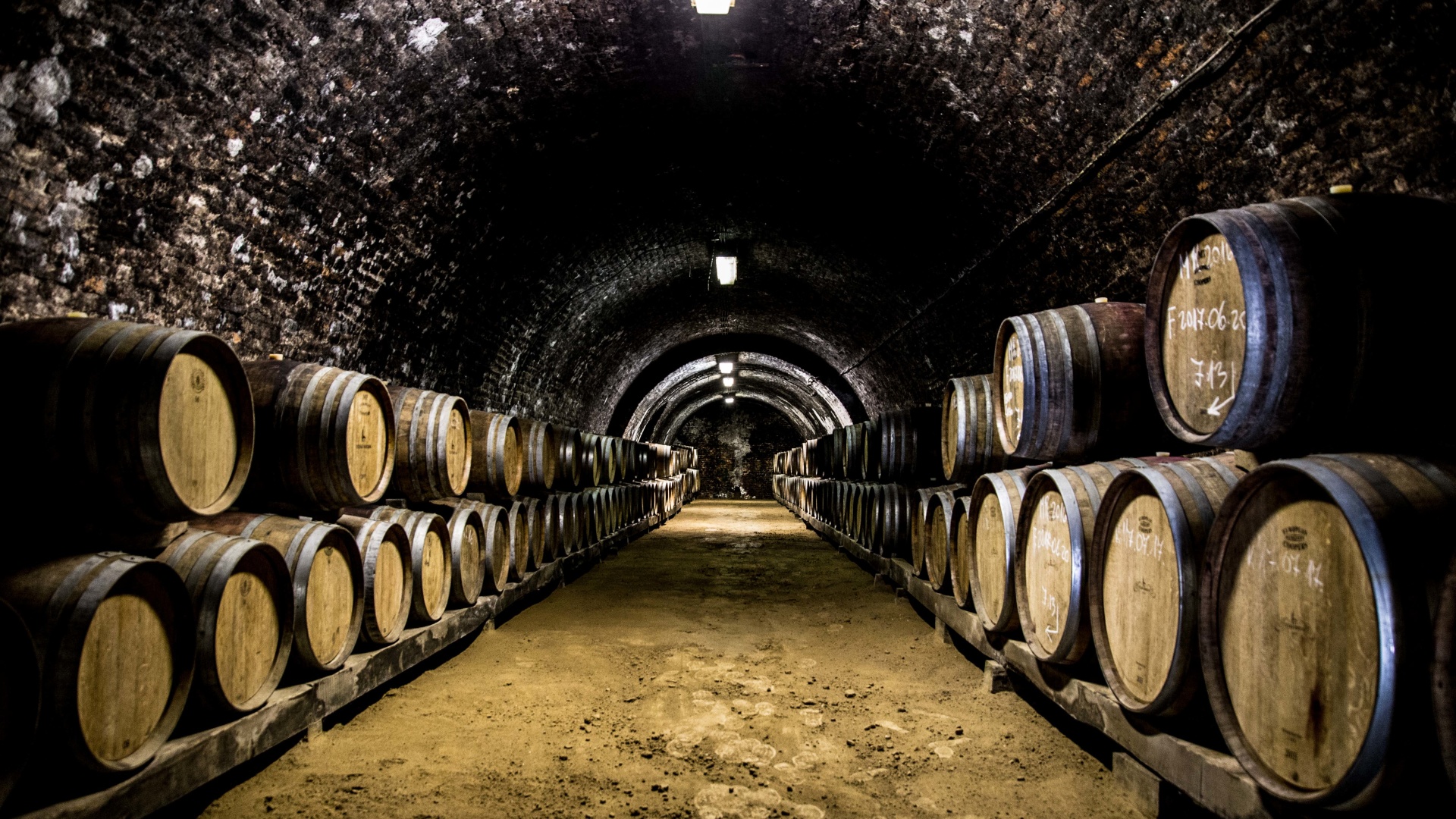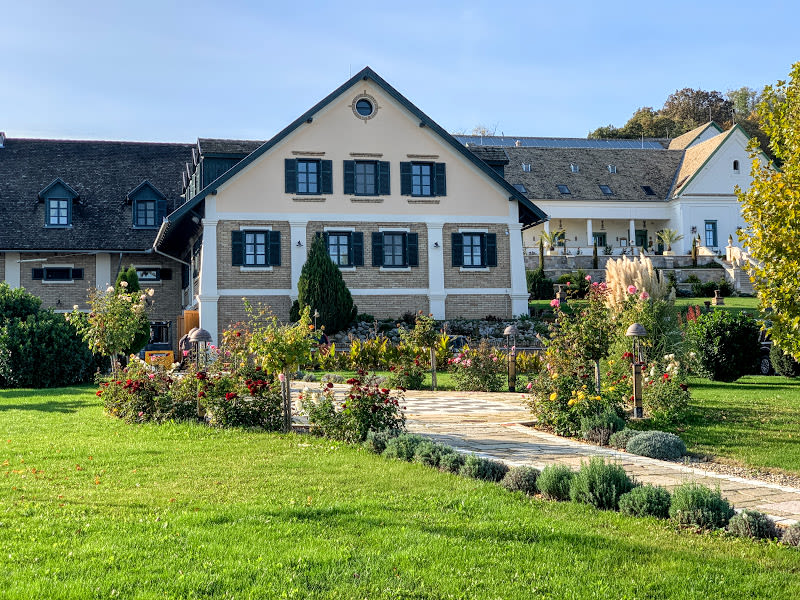Meet some of the region's top winemakers.

The highlight of a Szekszárd trip is the winery visits: You get to meet passionate winemakers and taste excellent wines. I included below a list and a short profile of my favorites. The list reflects my own impressions based on visits and tastings, and also those of respected Hungarian sommeliers whose expertise I sought out. Naturally, it's subjective and in some cases incomplete (for example, if logistics prevented me from visiting a winery, that place wouldn't be included).
You'll find both sizable, corporate-owned wineries and small operations, but I’m partial to family wineries that convey a special sense of place. Finally, note that only wineries that accept visitors are featured.
A few things to keep in mind
Try booking a tasting as far in advance as possible since not all wineries are open or accept visitors all throughout the year.
If you’re at least somewhat knowledgeable about wines and curious to learn more, gently convey in your email that you’d love the head winemaker to lead the tasting (with family wineries this is often the default case).
A tasting costs around €10-15 per person. Hungarian visitors often end up buying several bottles afterward. For foreigners, logistics can complicate things, so consider leaving a generous tip if you don’t purchase any wine.
Tastings usually go for an hour, but they can last much longer than that. It’s prudent not to schedule more than two, maximum three, winery visits per day.
If you’re driving, or simply don’t feel like getting loaded at midday, use the spittoons provided. By smelling and swooshing the wine around your mouth, you’ll still be able to get a sense even without swallowing it.
Not all winemakers speak flawless English but most of them are conversational.
It can be pretty cold in the wine cellars even in the summer months, so be sure to bring a sweater with you.

Click here to expand the wine map.
The winemakers

Heimann Családi Birtok (location; 25 hectares / 62 acres plus purchased grapes; [email protected]; +36 30 311 4490): One of the best-known labels in all of Hungary, Heimann is a family winery currently run by the third generation. The panoramic estate is perched atop Iván valley with sweeping views toward the vast expanse of the Hungarian Plain (Alföld). After internships abroad and a degree in oenology from the prestigious Geisenheim University, Zoltán Heimann Jr. is back in Szekszárd and focused on making wines from two native grapes: kadarka and kékfrankos. Like others from his generation, he is fond of using contemporary techniques like egg-shaped aging tanks. He sells his wines under the “Heimann & Fiai” brand.

Németh János (location; 10 hectares / 25 acres; [email protected]; +36 20 414 5544): János Németh has been making wine in his native Szekszárd for more than two decades, using his great grandfather’s enlarged 19th-century winery perched on a charming hillside. He is increasingly focused on wines made from kadarka and kékfrankos (blaufränkisch) and the Bull’s Blood (Bikavér) blend. To convey the “true” flavor of kadarka, he uses neutral steel tanks instead of flavor-producing oak barrels to age the wines, which are among the select few served at receptions hosted by the Hungarian Parliament.

Sebestyén Pince (location; 13 hectares / 32 acres plus purchased grapes; [email protected]; +36 30 378 1210): Csaba Sebestyén had been a car mechanic when nearly two decades ago he decided to drop the screwdrivers and instead dedicate all energies to his small hobby winery. Together with his sister, Csilla, who has since become a respected sommelier, the two of them have been systematically building the family business and honing their skills along the way. Today, they’re best known for their kékfrankos-forward Bikavér (Bull’s Blood) blends, especially those from the Görögszó (heftier) and the Iván (rounder) vineyards.

Pósta Borház (location; 20 hectares / 50 acres; [email protected]; +36 30 946 8536): More than a decade before natural wines entered the mainstream in Hungary, brothers Péter and Gergő Posta were already making wines with little intervention. Their must-try bottles are the rich and elegant olaszrizling, harvested from their father’s 50+ year old vine, the highly accessible kékfrankos single varietal, and the amphora-aged kadarka. A memorable gastronomic experience complements the wine tastings here.

Takler Pince (location; 80 hectares / 200 acres plus purchased grapes; [email protected]; +36 74 311 961): Takler was among the first private wineries to appear in Szekszárd at the end of the communist era in 1987. This small family business has become a true success story, currently selling almost a million bottles a year and also running a posh hotel and restaurant on the premises. While most Takler wines end up on supermarket shelves, their premium lines are worth your attention — my favorite kékfrankos (blaufränkisch) in all of Szekszárd is their Gurovica-vineyard selection. Even if only for coffee, it’s worth stopping by the Takler estate.

Szeleshát Szőlőbirtok (location; 58 hectares / 143 acres; [email protected]; +36 30 523 0705): Impressively, Szeleshát’s giant 58-hectare vineyard consists of a single connected plot of land — endless rows of vines coating the softly rolling hillsides against the silhouette of the nearby town of Bátaszék. The Szekretár family started out growing wine grapes for other wineries before venturing out on their own in the early aughts. Their state-of-the-art winery has earned a name for itself with its round and approachable “K2” kékfrankos (blaufränkisch). Also memorable is “November,” a blend of cabernet franc and merlot, made to bring comfort and solace to the gloomy evenings of the late fall.

Ifj. Márkvárt János (location; 5 hectares / 12 acres; +36 20 492 4311): János Márkvárt believes in a hands-on approach with all aspects of winemaking. For example, he built his underground wine cellar himself, digging through a meter’s worth of soil a week. Márkvárt is best known for his easygoing kadarka wines, which beautifully express the essence of this grape: spicy and fruity and fresh. His Bull’s Blood (Bikavér), based mainly on kékfrankos (blaufränkisch) and cabernet sauvignon, is heftier and perfectly balanced. Note that Márkvárt accepts visitors only during the winter (November to March).